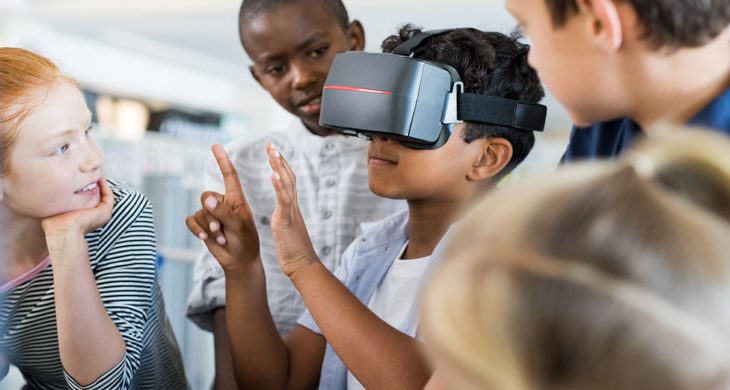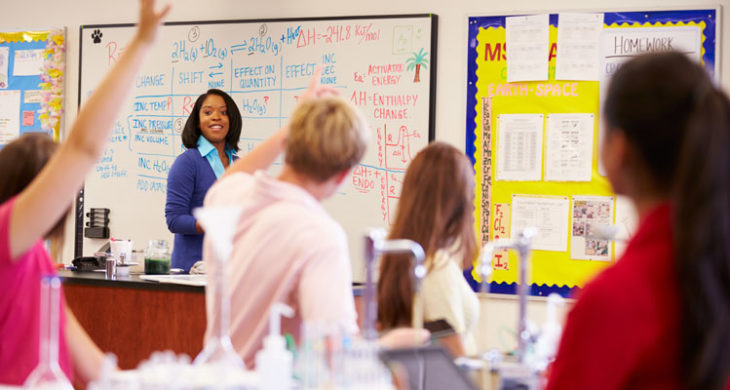The National Academies of Sciences, Engineering, and Medicine first published its research report “How People Learn: Brain, Mind, Experience, and School: Expanded Edition” in 2000. Recently, the nonprofit released the updated report “How People Learn II” with new data and insights developed over the last couple of decades.
The full report is 375 pages, so it may be difficult for many educators and parents to read the entire study, but it does reveal some important insights on how children learn and the impact classroom teaching has on them. The following synopsis covers highlights of the five factors that affect learning according to the study.
1. The Impact of Culture
The research involved in writing “How People Learn II” uncovered the importance that culture plays in the classroom and in the student’s life. “Cultural influences shape individuals from the beginning of life,” the report authors explain. And cultural interpretations of learning and intelligence can be quite different depending on the culture. Some traditions emphasize learning by observation, for example, while others stress teacher instructions. And some cultures believe that when a student veers away from the structured model of learning he is being creative and intelligent, while others define intelligence as being able to imitate the instruction with precision. Regardless of these differences, most students learn best when they live in a culture that values not just education but understanding the material well. So students should be encouraged to question and test concepts when they are learning.
2. Learning Is Dynamic
Research in neuroscience shows that the brain continues to evolve throughout life. Learning never stops. After students graduate from high school, their brains continue to learn new things.
Interestingly, findings show that the brain develops in different ways depending on a person’s experience. Those parts of the brain that get used most often receive more blood than those that do relatively little work. More neurons also develop in areas of the brain that get used frequently. The brain of a person who reads a lot will develop differently than the brain of someone who does math often.
Amazingly, the brain’s plasticity allows ongoing changes. If the constant reader starts doing more math, then the brain will rearrange itself to enable the new skill.
3. Mental Models and Learning Strategies
The report finds that “mental models” play a crucial role in developing knowledge and learning how to apply knowledge to real-world scenarios. Educators need to do more than ensure that students retain information. They also need to show students how to make inferences and solve new problems. “Examples of effective strategies,” according to the report, “include encouraging students to summarize and explain the material they are learning, as well as encouraging learners to enrich their mental representation of information by calling it up and applying it in various contexts.”
Additionally, the study finds that people use different mental models depending on how experienced they view themselves. People who consider themselves experts tend to have inflexible mental models that limit learning new information (they can lack a growth mindset). Accomplished novices, however, have mental models that seek to learn more information and acquire new skills.
4. Motivation to Learn
Motivation is crucial for learning to take place. Students can only learn if they want to learn.
But motivation isn’t intrinsic or unchangeable. Research shows that giving people opportunities to share their work creates social motivation that encourages more work. For instance, students will put more effort into writing stories when they know that they will share the stories with their peers. Other suggestions for increasing students’ motivation to learn include:
- Setting collaborative learning goals with students
- Making the learning experience attractive to students
- Giving students a “sense of control and autonomy.”
- Providing feedback on the learner’s progress
- Ensuring a safe learning environment
5. The Role of Technology
Technology has evolved quickly since The National Academies of Sciences, Engineering and Medicine published its first report in 2000. For instance, today’s teachers and students have access to options like websites that help with school assignments and mobile apps that reinforce learning.
Interactive technologies offer some of the most beneficial options because students can receive feedback and learn to refine their approach to learning new information. Other useful technologies include digital libraries, social media that connects students to diverse ideas, and software that analyzes data. Even virtual reality has proven to be helpful such as when helping students perform lab experiments they might otherwise not have had access to.
Teachers need to plan carefully when they use technology in the classroom. But research has already found that laptops in the classroom, when provided to all students, can be effective for learning and improve academic performance.
Continued research from studies and reports such as “How People Learn II” provide new research and insights on a variety of subjects related to learning. The more insights educators and parents can glean from such data, the more help they can provide to today’s students. If you’re looking for ways to help your children learn, consider enrolling them in a virtual school, where they can receive a high-quality, personalized education experience online. Visit K12.com and request more information.
,










